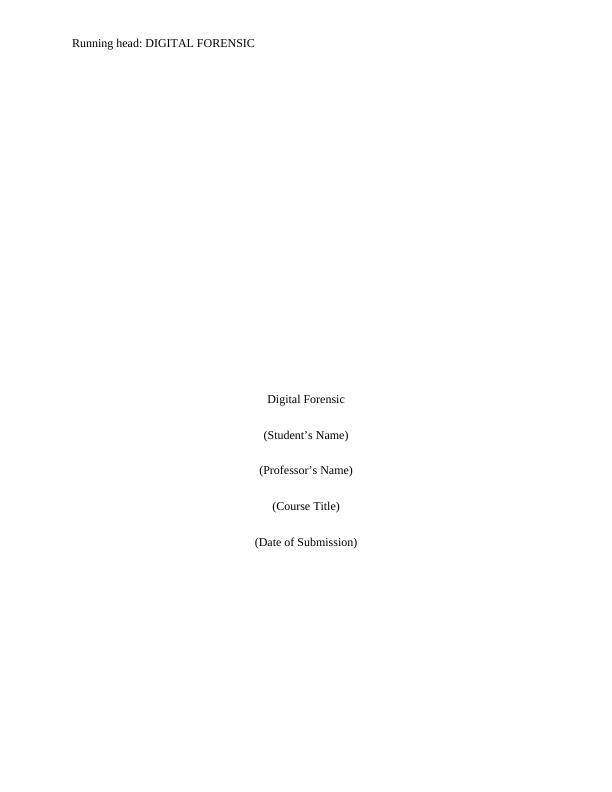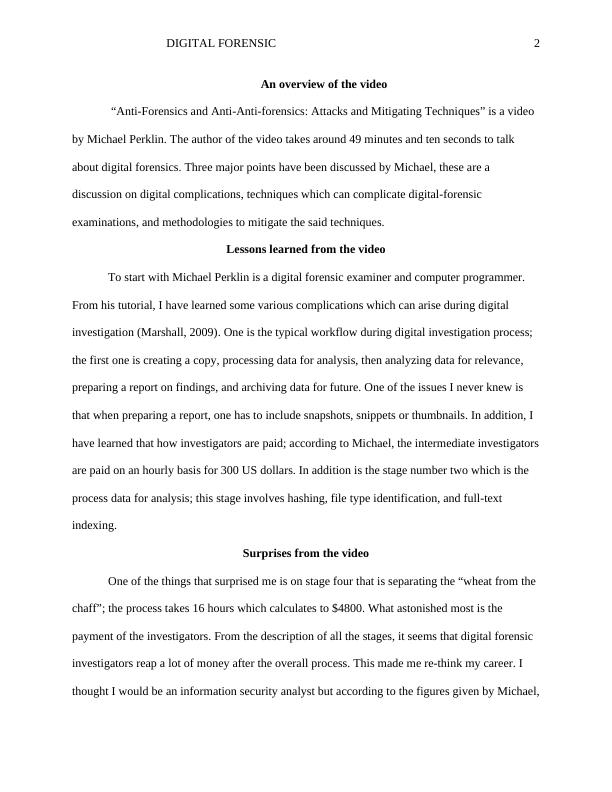Digital Forensic: Attacks, Mitigating Techniques, and Lessons Learned
4 Pages738 Words349 Views
Added on 2023-06-05
About This Document
This article provides an overview of the video 'Anti-Forensics and Anti-Anti-forensics: Attacks and Mitigating Techniques' by Michael Perklin. It discusses digital complications, techniques which can complicate digital-forensic examinations, and methodologies to mitigate the said techniques. The article also covers lessons learned and four different ways that a bad actor may try to obfuscate their tracks, along with mitigation strategies of the attacks.
Digital Forensic: Attacks, Mitigating Techniques, and Lessons Learned
Added on 2023-06-05
ShareRelated Documents
End of preview
Want to access all the pages? Upload your documents or become a member.
Digital Forensics and Incident Response
|4
|727
|19
International Journal of Computer Applications
|4
|794
|16
Digital Forensic Investigation
|10
|2304
|106


